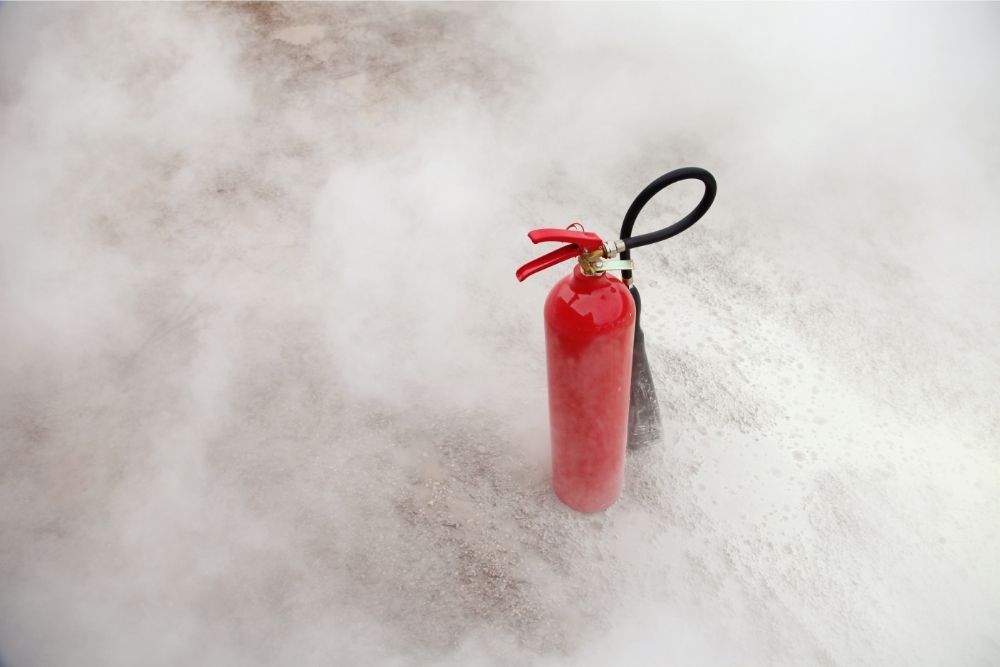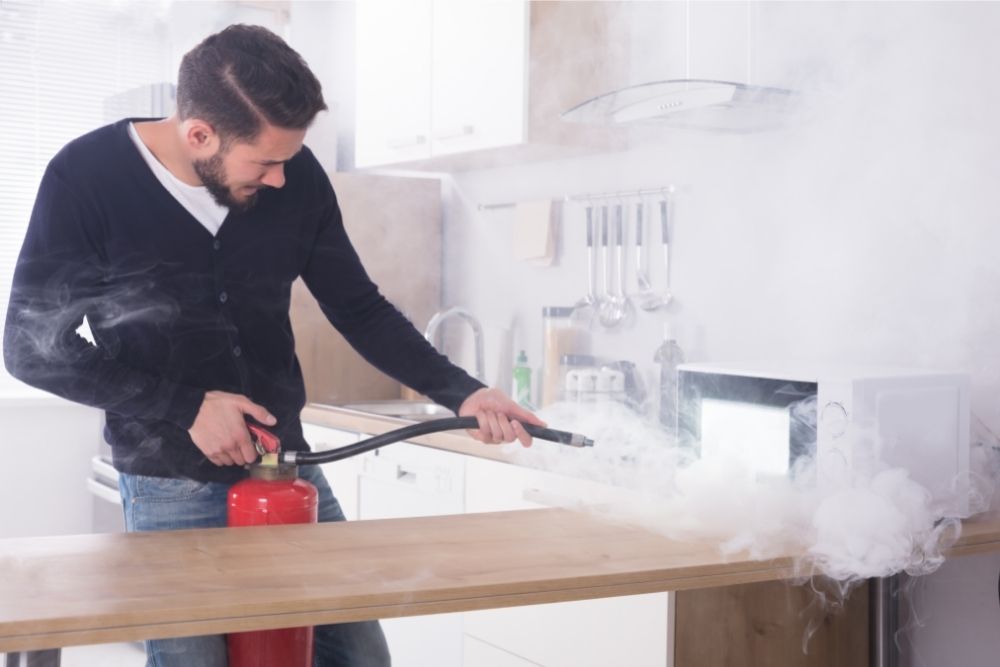Having to tackle a dangerous fire can be a stressful and even traumatic experience, especially if the fire is in your home or workspace.
In situations such as this, you may find yourself the only person capable of putting the fire out, or the only person with the means to quickly call the fire department for help.
But once the fire has been extinguished, won’t everything be alright?
Well, yes and no. Although there is countless information concerning fire safety and how to successfully use a fire extinguisher. There is very little written about the aftermath that follows the tackling of a fatal fire.
Not only can a potentially dangerous fire leave huge areas charred and smoking, but the extinguishing methods can also leave your home and office looking like a post-apocalyptic war zone.
So what can you do when faced with a charred room that is covered in fire extinguisher residue? Well, various techniques can be utilized, although these methods often depend on the type of fire extinguisher that has been used.
We have compiled some handy information on how to clean up fire extinguisher residue and the best ways to remove it from your domestic space.
Types Of Fire Extinguisher

Although fire extinguishers can all look similar, there are five types of extinguishers that can be used to combat a spreading fire.
These five models each contain a different kind of residue, which can only be used to extinguish a certain class of fire.
If you intend to clean up any fire extinguisher residue, then you need to know what type of fire extinguisher you are dealing with.
Down below we have outlined the five different extinguishers, as well as their different components and capabilities.
Water Extinguisher (Red Label)
Water extinguishers are considered to be the most popular model of extinguisher, although they are only capable of putting out Class A fires – which means fires that have been caused by organic materials such as paper and coal.
Water extinguishers do not contain any form of chemical residue and instead distribute highly pressurized water to extinguish the flames.
Foam Extinguisher (Cream Label)
Foam extinguishers are the most common type of extinguisher that you will encounter and can often be found in schools and offices.
They are primarily used to extinguish Class A and Class B fires – which are fires that have been ignited using flammable liquids such as petrol.
Foam extinguishers contain a foamy, white residue that is made from a blend of perfluorinated and hydrocarbon surfactants.
Dry Powder Extinguishers (Blue Label)
Dry powder extinguishers are often referred to as ABC extinguishers, as they can be used to tackle almost any class of fire. The only fire they can’t extinguish is Class F fires, which are caused by substances such as cooking oil.
Dry powder extinguishers contain a powder that is made from sodium bicarbonate, which is then released by a non-flammable, compressed gas.
Related: How To Clean Up Fire Extinguisher Powder
CO2 Extinguishers (Black Label)
CO2 extinguishers are seen as the primary way to extinguish Class E fires, which are electrical. However, this is their primary purpose and they can not extinguish most classes of fire.
CO2 extinguishers contain carbon dioxide, which is used to displace the oxygen feeding the fire, making the flames burn out.
Wet Chemical Extinguishers (Yellow Label)
Wet chemical extinguishers are primarily used to battle Class F fires, which are fires caused in kitchens by burning cooking oil and fats. Although this extinguisher can also be used to tackle Class A fires, it is not recommended.
Wet chemical extinguishers contain a chemical called potassium, which reacts with hot oil to create a protective coating of soapy foam.
Cleaning Water, Wet Chemicals & Foam Residue
When you have identified the type of extinguisher residue you are dealing with, then you can begin the cleaning process. Fortunately, water, wet chemicals and foam residue can be cleaned using the same basic method.
We have outlined this effective approach down below, as well as the equipment and protective gear you will need for the job.
Protective Equipment
When cleaning up water, wet chemicals or foam residue, you should always wear impermeable gloves, protective goggles and even a face mask if possible. This is because the chemicals in some foam-based extinguishers have been known to cause cancer.
Method
- Put on the protective gear that we have mentioned above.
- Soak up any excess foam or liquid using kitchen towels or old towels that can be disposed of after the cleaning process.
- Wash the area thoroughly with water and use the towels to soak up the moisture.
- For an effective clean, remove any material fittings (such as curtains, carpets and furnishing) and wash them.
- Place all of the used towels inside a garbage bag and tie it up before transferring it to a general waste bin.
Cleaning Dry Powder Residue
When it comes to cleaning dry powder residue, you will have to use a different and more cautious method.
The dry powder can be a highly irritating substance, and so you will need to make sure you are thoroughly protected before engaging with the residue.
Down below we have outlined the most effective way to remove dry powder residue, as well as the gear you will need for protection.
Protective Equipment
For cleaning up dry powder residue you will need to wear a dust mask, protective gloves and goggles – as the dry powder substance has been known to irritate the skin, eyes, throat and lungs.
Method
- Put on the protective clothing that we have mentioned above.
- Take a vacuum cleaner and use it to clean up any excess dry powder. Or you can sweep it away using a dustpan and brush.
- Once you have done this, take all the dry powder from your vacuum cleaner or dustpan and pour it into a plastic bag.
- When you have sealed the bag, you can dispose of it in a general waste bin.
- Then take a moist cloth and clean away any dry powder residue from your furnishings. For this, you will need to use a large amount of water as the powder has been known to eat away at soft materials.
- Curtains and carpets should also be fully washed if possible.
Related:

